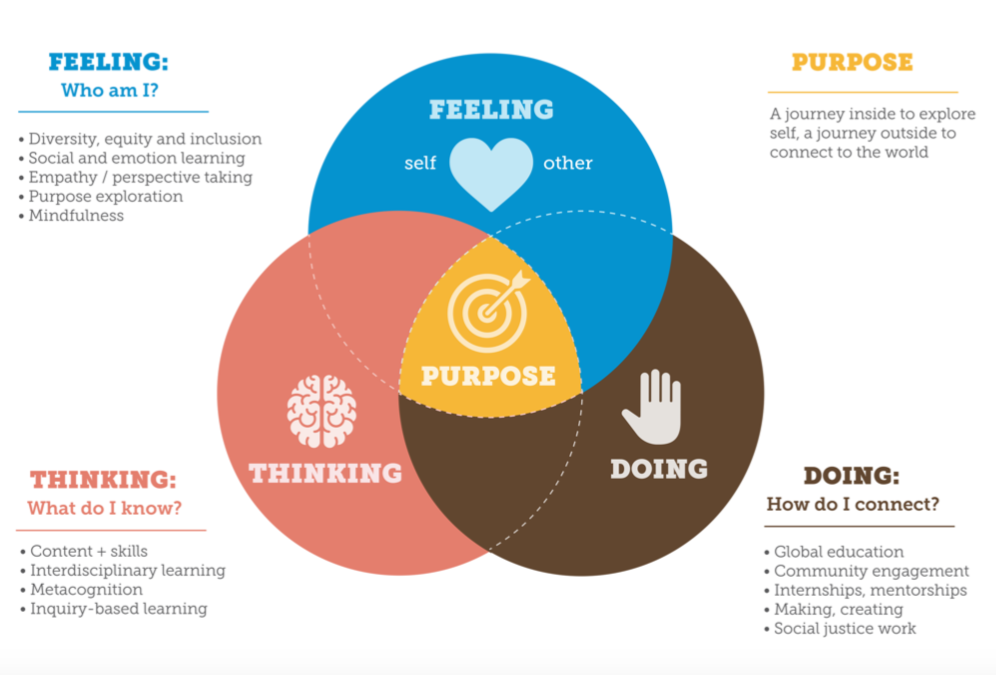Finding Purpose: Students Craft Their Mission Statements
By Sue Belcher
At The Downtown School, we believe that every student has gifts and talents that need to be nurtured and shared with the world. For that reason, we launched the year by hosting a schoolwide Youth Purpose Summit. Ross Wehner, a national expert on purpose learning and founder of the World Leadership School, led our adventure in learning. In his recent article, “Purpose Learning: Reimagining How Students’ Learn,” Ross frames why empowering young adults to find their purpose is so important. Through a variety of activities, Ross helped DTS students identify their superpowers and reflect on how they can use these gifts to have a positive impact on the world. Essentially, he empowered every student to craft a personalized mission or purpose statement. In this case, “purpose” is a stable intention that is meaningful to self and beneficial to the world. A basic mission statement would follow a format such as, “I ___verb/gift____ in order to ___(effect/impact)____.”
How might crafting mission statements impact student learning?
Research shows that young adults who have a sense of purpose have increased happiness, better relationships, better stress management, and more academic engagement.
Purpose learning sits at the intersection of thinking, feeling, and doing. When students engage in learning holistically, they access and connect more areas of the brain. The old adage goes, “Neurons that fire together, wire together.” Essentially, pathways in the brain are formed and reinforced through repetition, increasing both knowledge and retention.
Students reframe their thinking from WHAT they are learning, to WHY they are learning it. It is true that there are some aspects of “doing school” that may feel tedious, but that simply need to be completed. Having a sense of meaning in the broader context can help students forge through these tasks more easily.
Finally, purpose is a survival skill. It can help students find their way in an increasingly noisy and chaotic world.
Yesterday was just the beginning of our purpose learning journey. Identifying mission statements is meaningless unless we circle back to them regularly. In advisories, we will use purpose statements to set goals and commit to daily habits and practices that support attaining those goals. We’ll help students identify their “saboteurs” and equip them with mindsets to work on combating them. This is messy but meaningful work.
This work is particularly important for seniors as they start on their college process. For example, Luca M-K ‘23 knows that music will definitely be a part of his college major, but yesterday he established his WHY. He shared, “I want to learn, experience, and create, so that I can communicate, move, and relate.” Stanford is even moving away from having students declare majors, and having them declare missions instead. I look forward to seeing if other institutions of higher education follow Stanford’s lead.
At The Downtown School, we believe that every young adult is blessed with something golden inside of them. It is worth identifying, naming, owning, and channeling. As an educator, I can’t think of more important work. Our community is the most connected, elevated, and strong when every student sees their strengths, and uses these gifts to have a positive impact.




